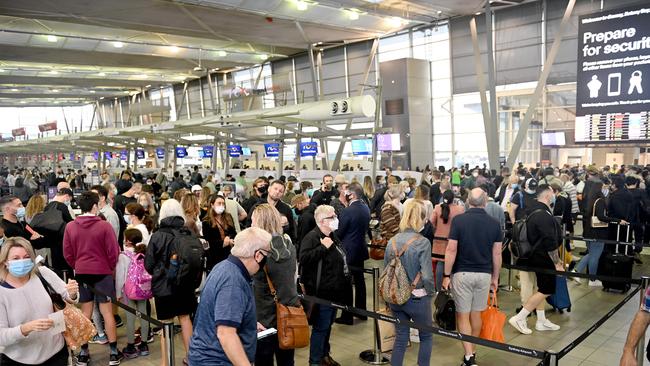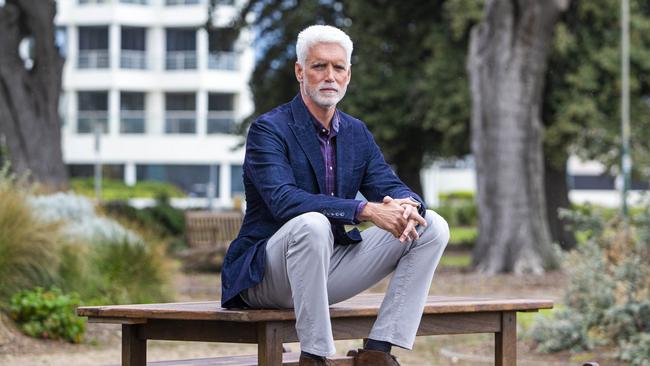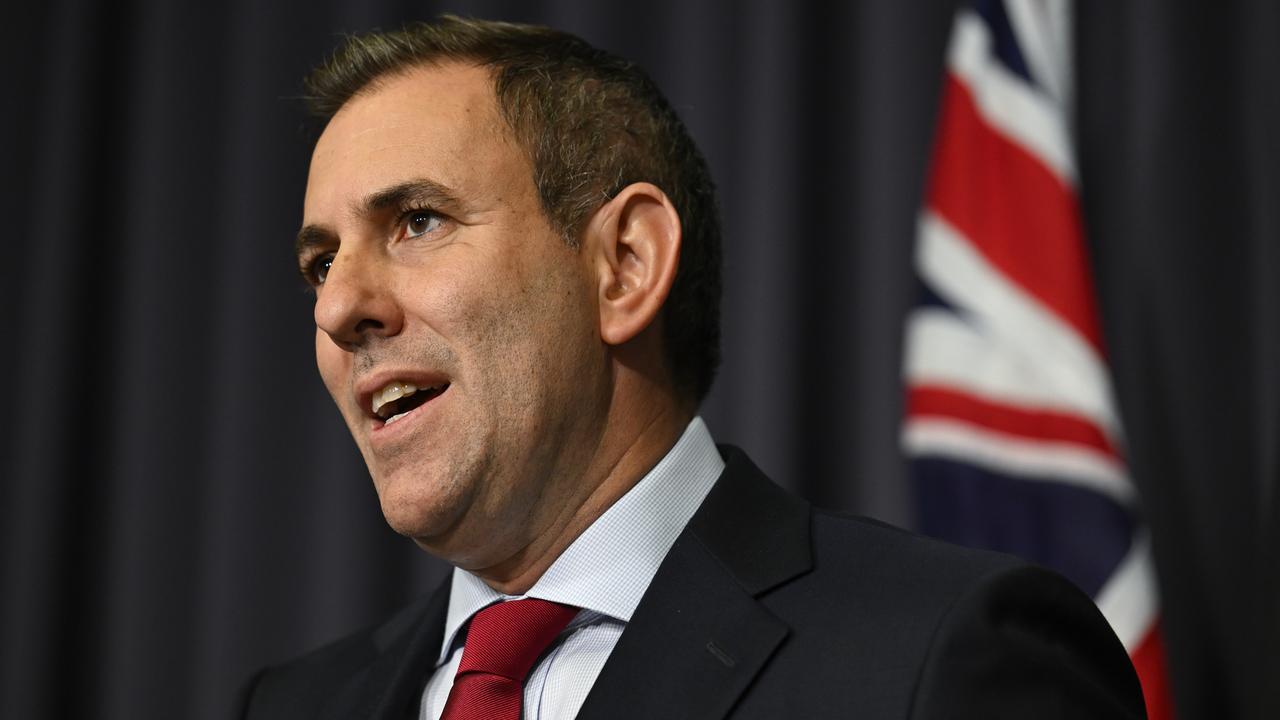Toll roads traffic spikes to pre-Covid levels as people dash to airports for Easter holidays: Transurban CEO Scott Charlton
The toll road to Brisbane’s airport saw a 42 per cent spike in traffic ahead of the Easter long weekend and a 20 per cent jump in Sydney.

Transurban has registered the strongest traffic volumes since the beginning of Covid-19 on its roads that lead to the nation’s biggest airports, with the mayhem of throngs of passengers lined up at Brisbane, Sydney and Melbourne airports mostly beginning on its toll roads.
And in figures revealed to The Australian, that surge in traffic spiked on Wednesday as Australians rushed to the airport to fly off on holiday.
According to latest volumes, Transurban’s toll road that leads to Brisbane airport had a massive 42 per cent leap in traffic volumes on Wednesday, compared to an average day in teh March quarter. Sydney’s airport toll road traffic was up 20 per cent and Melbourne’s airport toll road traffic up 16 per cent.
In a further sign the national economy is opening up following years of lockdowns, Transurban has also revealed that flows of freight, namely trucks, across its CityLink road in Melbourne was the largest on record as an uptick in commerce led by the boom in online shopping and businesses restocking put more cargo on the roads than ever before.
Transurban, the $42bn toll-road company whose assets include CityLink, the Eastern Distributor in Sydney as well as a stable of US roads, has witnessed a rebound in traffic numbers in the March quarter that has accelerated into April and the Easter holidays.
The growth in road traffic was most pronounced on Transurban toll roads that link to the airport, Melbourne’s CityLink, the Eastern Distributor in Sydney and Brisbane’s Airport Link.
“What we have seen now in the last month is a really opening up of those routes and even though they‘re not back to pre-Covid levels, we’re really only sort of down single digits in relation to airport traffic,” Transurban chief executive Scott Charlton told The Australian.
“But we’ve been down 40, 50, 60 per cent before (during Covid) so we have seen that massive bounce back and obviously you see it at the airports, but yes people are travelling again particularly domestically and most of the airport traffic is domestic traffic so things like Eastern Distributor, Airport Link and CityLink,” Mr Charlton said.
“We have seen that big bounce back in March, and obviously that‘s continuing into April and if you couple that with the airport traffic with what we’ve seen on the freight traffic where we have had record days on some of our assets in Melbourne and Sydney.
“You can see the economy and things really coming back,” he said.
This surge in traffic to the airport will be well known to the hundreds of thousands of Australians now massing across the country’s leading airports as they try to fly off for a domestic holiday for the first time since 2019 and are facing chaos at airport terminals that are buckling under the rush of passengers.
Sydney Airport is expecting its busiest day in two years and is at the epicentre of the crowd mayhem as 82,000 people attempt to pass through Sydney’s domestic terminals in just one day.
And many are using Transurban toll roads to get to the airport.
“We are excited to see people travel again, nobody likes to see those scenes but I‘m sure it’ll be worked out shortly and get back to hopefully what is more normal travel patterns.”

Travel on Australian airport exposed assets improved over the March quarter, in line with increasing domestic travel, with February and March traffic on these roads the highest it has been since March 2020.
In its quarterly update released on Thursday, Transurban said the March quarter again demonstrated traffic recovery occurring in line with the progressive easing of government restrictions and increased economic activity.
During the period, average daily traffic increased by 0.4 per cent compared to the March quarter 2021 and was 3.4 per cent lower compared to the same period in 2019 with that fall reflecting the outbreak of Omicron earlier this year.
Severe rainfall events occurred in late February to early March in Queensland and NSW, with traffic in those markets recovering quickly as weather patterns normalised. Weekly traffic volumes show a steady growth further into the March quarter.
In terms of freight volumes, at a record high across Melbourne, Mr Charlton said it reflected the flowering of business activity as corporations and consumers leave behind the lockdowns and restrictions on movement to resurrect business activity.
“We have lost two years of growth, 2019 until today, so I think what you are going to see is a catch up over the medium term to the long term averages,” he said.
“People are restocking their businesses and preparing for what we are seeing happening, as well as I think obviously over the last two years there‘s been a lot of a bigger move to online shopping logistics and other things as well which obviously helps the freight community.”




To join the conversation, please log in. Don't have an account? Register
Join the conversation, you are commenting as Logout